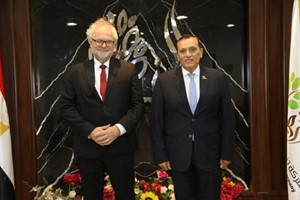Rice production
Taiwan produces two rice crops a year. The first crop is harvested between May and July, the second between October and December. Substantial government support means domestic rice is not price competitive in the global market. Therefore, domestic production is primarily for local consumption, accounting for approximately 90 percent of the total staple rice consumed in Taiwan, the remaining 10 percent is met by imported rice under the WTO TRQ. After their 2002 WTO accession, Taiwan targeted domestic rice production at 1,130 TMT to 1,140 TMT, depending on crop conditions, from 260 THA. Taiwan is only about 33 percent self-sufficient in overall food production. To encourage production, Taiwan authorities upwardly adjusted domestic rice purchase prices by 13 percent in 2011, enticing farmers to expand rice production beyond the Council of Agriculture (COA) targets. As a result, rice output in 2014 exceeded 1.20 MMT, approximately 8 percent higher than the target level. However, the country experienced a drought in spring 2015 resulting in a 7 percent production decrease. Such relieved stock pressures resulting from the previous year's over-harvest. Under current rice purchase programs, Taiwan's rice market is stable and has a sufficient supply from domestic production.
Consumption growth


In a drive for greater food self-sufficiency, COA initiated several promotional campaigns to increase domestic rice consumption. Taiwan authorities, however, face a tough battle to reverse declining per capita annual rice consumption that once stood at 98 kg but fell to only 45 kg in 2013. Consumption was up only slightly in 2014, at 45.7 kg. By comparison, over the past 30 years, per capita wheat consumption rose from 23 kg to 36 kg. Taiwan's goal is to reach a 40 percent overall food self-sufficiency rate by 2020 compared to 33 percent at the present. The feasibility of this goal is dubious. Taiwan's COA promotes traditional rice noodle products made from 100 percent rice flour as a way to increase rice consumption. Currently, many rice noodle products are made with a large percentage of cornstarch or other lower priced starches to cut production cost. According to Taiwan's national standard, a product labeled "rice noodle" must contain a minimum 50 percent or higher of rice flour; otherwise the product shall not be labeled "rice" noodles. The total consumption estimate for 2016 is lowered from the previous estimate due to less (old) rice available for feed use. Consumption estimates for the forecast year are reduced to 1,230 TMT.
Trade outlook
According to their WTO accession agreement, Taiwan's tariff rate quota (TRQ) for rice is 126 TMT (144,720 MT brown equivalent), which accounts for approximately 10 percent of domestic rice consumption. Taiwan's rice TRQ is divided into two portions: 35 percent or 44 TMT (50,652 MT brown equivalent) is reserved for private sector imports and 65 percent or 82 TMT (94,068 MT brown equivalent) is set for public sector imports. The U.S. country specific quota (CSQ) allocation is 56 TMT (64,634 MT brown equivalent). A shift to increasing CSQ purchases of U.S. rice under the Simultaneous-Buy-Sell (SBS) regime has led to opportunities to direct marketing U.S. rice to retail. By contrast, U.S. rice imported under the normal CSQ tender regime is included in public reservoir stocks and is released to the market per COA approval and oversight.


Imports
All rice imports are made under the WTO TRQ of 126 TMT annually with CSQ allocations. According to Taiwan Custom's 2015 data, Taiwan imported 122 TMT of rice on a milled basis, of which the United States supplied 53 TMT accounting for 43 percent share, followed by Vietnam (27 percent), Thailand (21 percent), Australia (5 percent), Myanmar (2 percent) and other countries combined 2 percent. The quota for private sector imports is divided among three separate auctions. Bidding is scheduled each year during the months of November, February, and April. Under the TRQ system, importers bid for quota rights that are sold to highest bidder(s). Using the so-called "System Three" quota bidding system, Taiwan has successfully allocated all 50,652 tons (brown basis) of its annual private sector import quota rights to local importers since Taiwan's entry to the WTO in 2002. According to COA's preliminary statistics, Taiwan's fill rate for the 2015 rice TRQ for private sector imports is calculated at 99.79 percent or 50,545 MT (brown basis), of which only about 46 MT(brown basis) or 0.09 percent was U.S.- origin. The quota for public sector imports is divided by both country of origin and tender type: SBS and normal tender. SBS tendering is subject to a markup price (a floor price), and normal tendering is subject to a pre-set ceiling price calculated on the basis of delivery and duty paid (DDP) terms for delivery to designated COA warehouses. To encourage SBS quota licensees fulfill their SBS obligations, effective 2013 SBS tender performance bond was increased from a flat 10 percent of award price to USD64.358/MT, and then revised down to USD49/MT approximately due to lower world grain prices for the 2016 SBS imports. Regarding Taiwan's 2015 U.S. CSQ purchase commitments, Taiwan successfully awarded their SBS tender commitments for 35,600 MT (brown basis) of U.S. rice and normal tender commitments for 29,034 MT (brown basis) of U.S. rice. No U.S. rice was opened for global contract. For the 35,600 MT (brown basis) of the 2015 U.S. rice CSQ under the SBS scheme, 4,600 MT (as of February 29, 2015) is yet to be shipped to Taiwan by April 30, 2015 deadline. For the 29,034 MT of the 2015 U.S. rice CSQ under normal tender, only 1,150 MT had been imported in 2015 and the remaining 27,884 MT was tendered for delivery by June 30, 2016. It is anticipated a successful tender implementation year for the 2016 U.S. rice CSQ. As of reporting date, Taiwan has completed tender for 35,600 MT under SBS for delivery from May 1, 2015 to June 30, 2016.
Exports
Taiwan's rice exports in 2015 amounted to 75 TMT, of which 17 TMT was dedicated to humanitarian food aid with the balance sold on a commercial basis. This is about four fold greater than the previous year' as Papus New Guinea imported 55 TMT of rice from Taiwan instead of Australia. Under the bilateral ECFA, mainland China opened its import market to Taiwan rice in May 2012 with the first shipment in June of that year. Despite a great deal of trade promotion efforts, Taiwan exported only approximately 2 TMT to China and Hong Kong in 2014, and less than 2 TMT to China and Hong Kong combined in 2015. Taiwan's rice exports to China are produced primarily under the COA's Certified Agricultural Standards program, which is designed to promote Taiwan's agricultural production by certifying product quality and guaranteeing traceability and comes at a higher cost. Exports for forecast year are expected to near three TMT for commercial exports and 17 TMT for food aid.
Web: www.usda.gov











